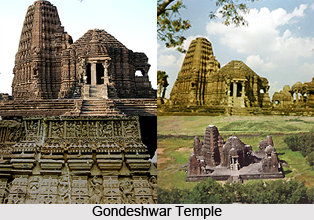The Gondeshwar Temple is a classic architectural example of the Hemadpanthi style. During the Adilshahi rule in Maharashtra, Ahmednagar was the capital. Hemadpanth was one of the pradhans (minister) of Ahmednagar, who had popularised a distinctive style of construction using locally available black stone and lime. This style became very popular in the ages to come, and came to be known as the Hemadpanthi style. The Gondeshwar Temple is perhaps one of the few existing structures of this style, still in sound condition, holding its ground.
Kalaram Temple: Built in 1794, Kalaram Temple is similar in architectural design to the nearby Trimbakeshwar Temple.
Kalaram Temple is built of solid black stone from the mines of Ramsej Hill. The temple is 70 feet high and the brainchild of Gopikabai Peshwa. There is a wondrous gold-plated copper peak on the temple. There are icons of Rama, Sita and Laxman lavishly adorned with fineries. The temple has a number of smaller in its vicinity, like- Vithal Temple, Ganapati Temple and Maruti Temple. Another important temple is that of Kala Ram.

The Peshwas built this temple. Great processions and utsav (celebrations) are held each year on `Ramnavami`, `Dusshera` and `Chaitra Padwa` (Hindu New Year Day). This structure was also built of black stone, brought from Ramsej Hill 200 years ago. Twenty-three lakhs of Indian currency and 2000 workers were needed to complete the temple in 12 years. The apex is made up of 32 tons of gold. In the year 1930, Dr. B R Ambedkar performed Satyagraha to allow the entry of Harijans inside the temple premises.





















